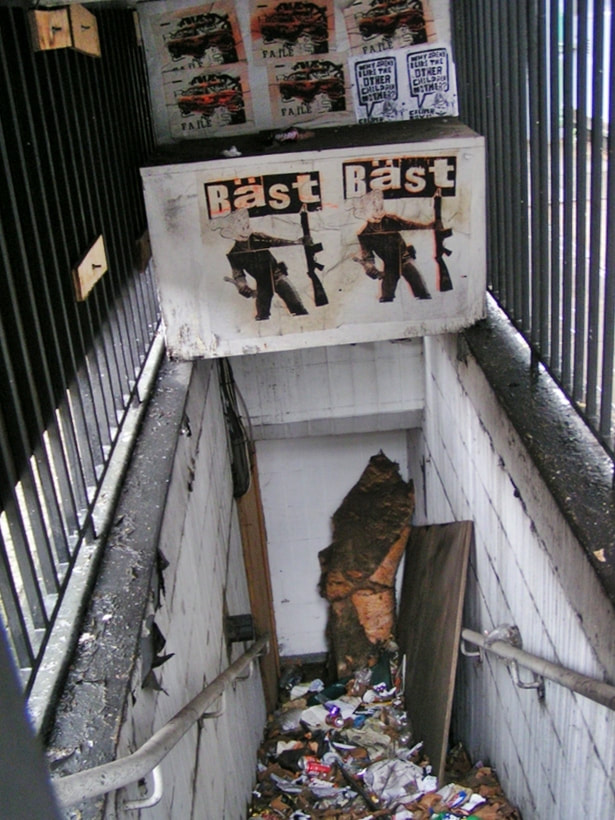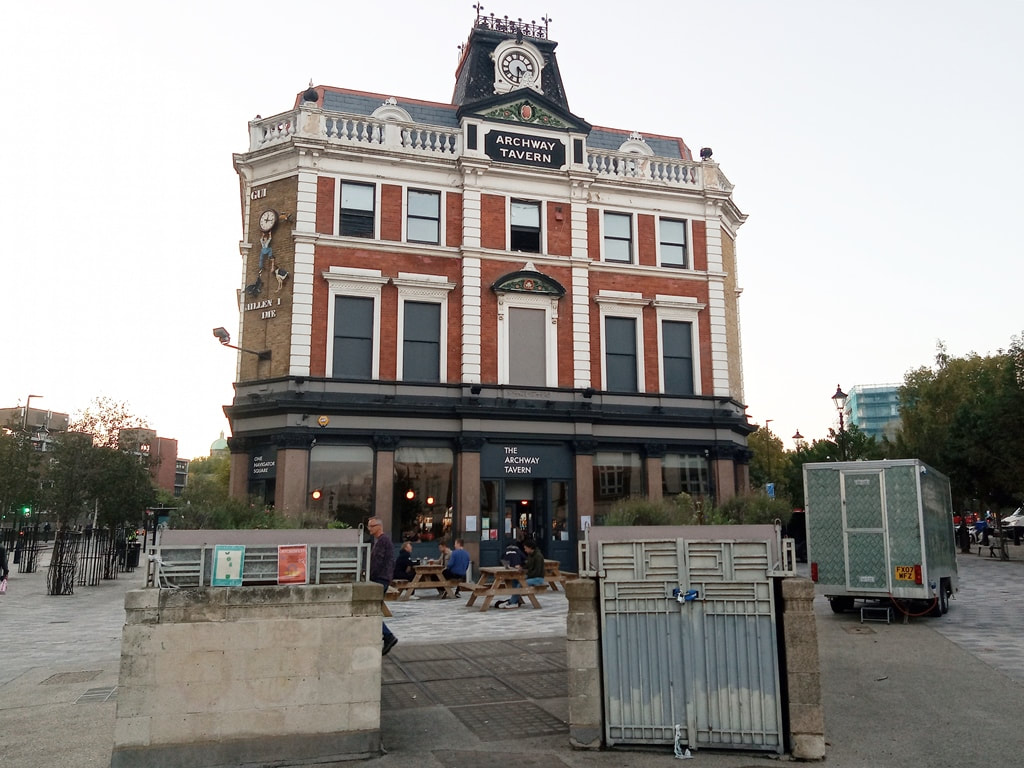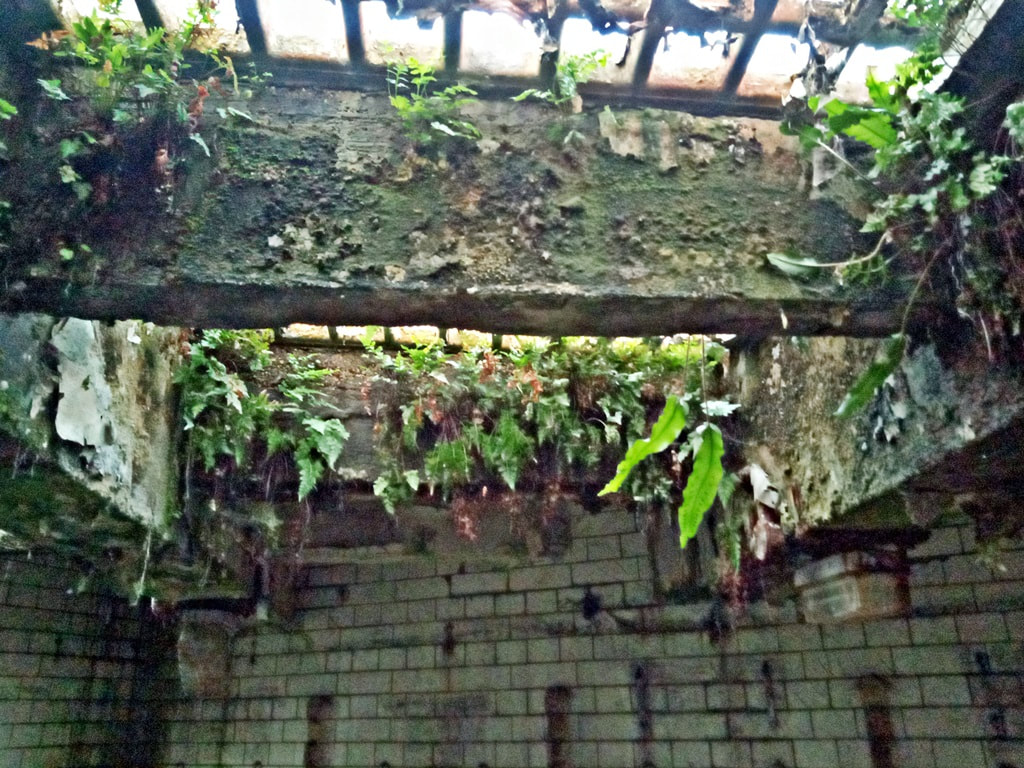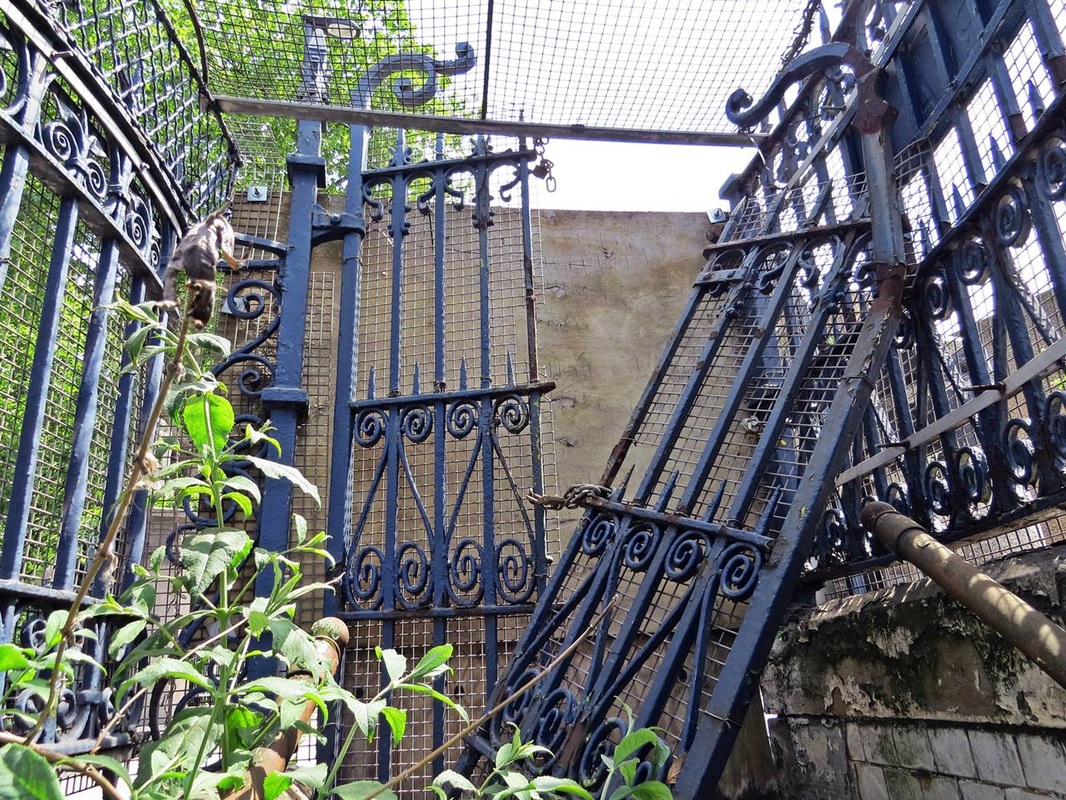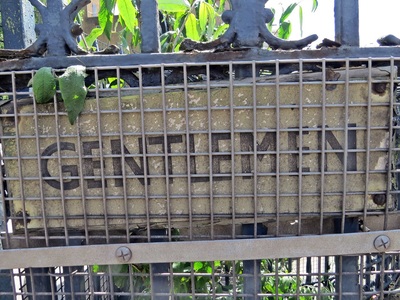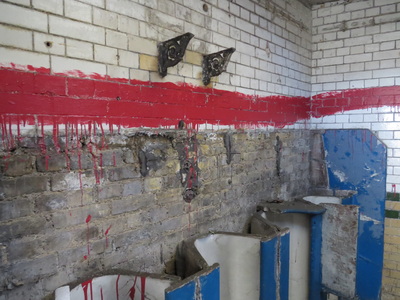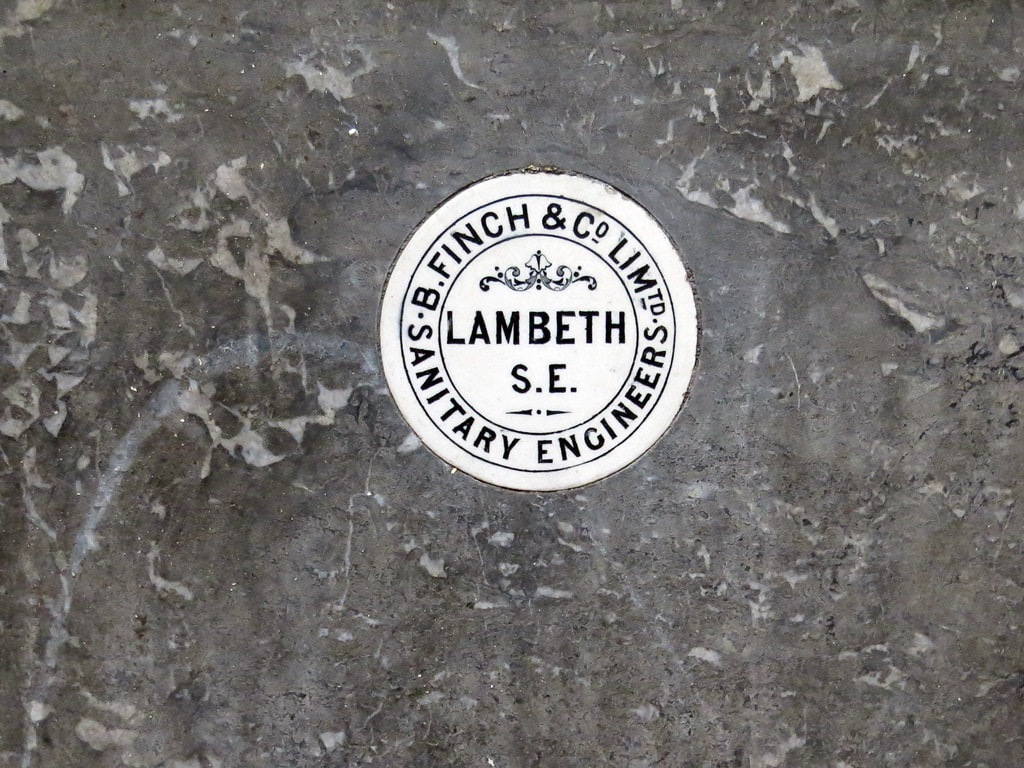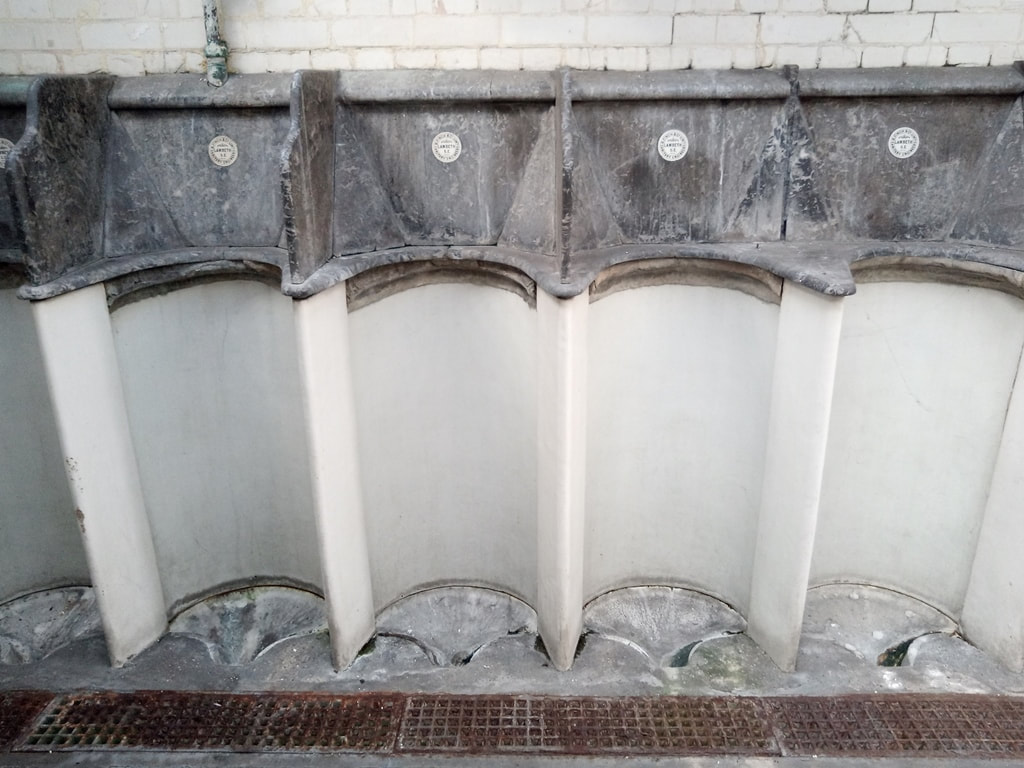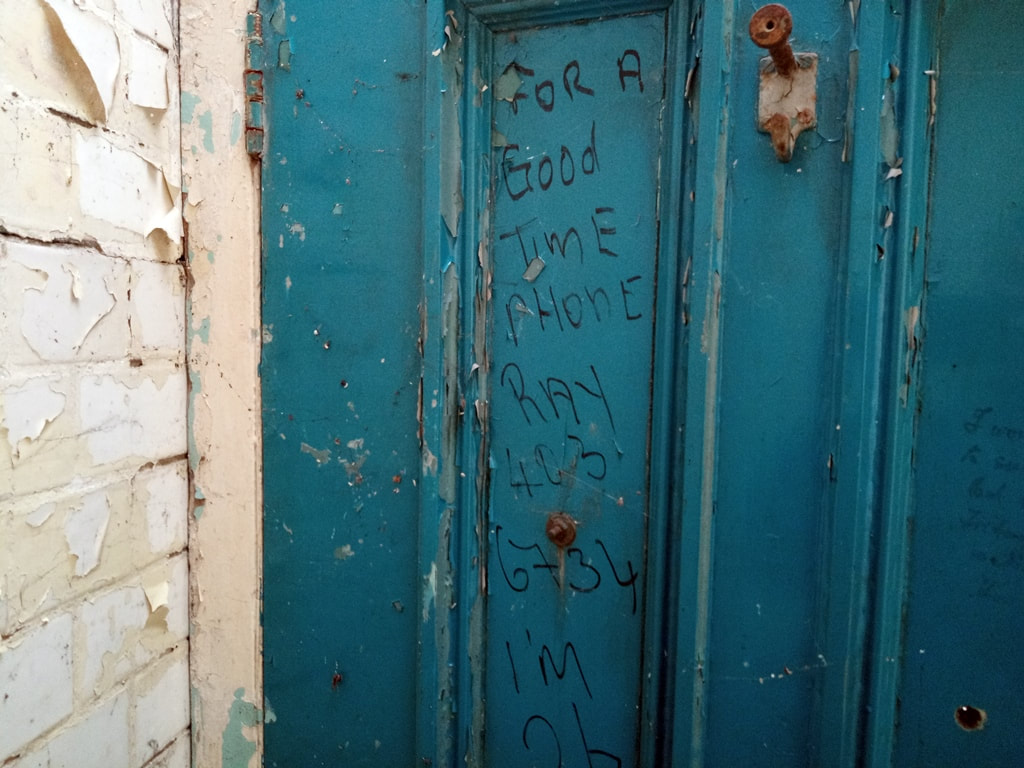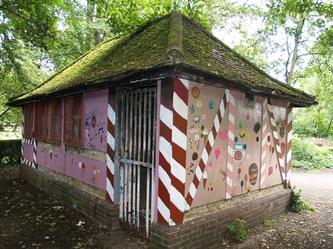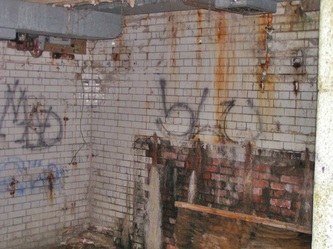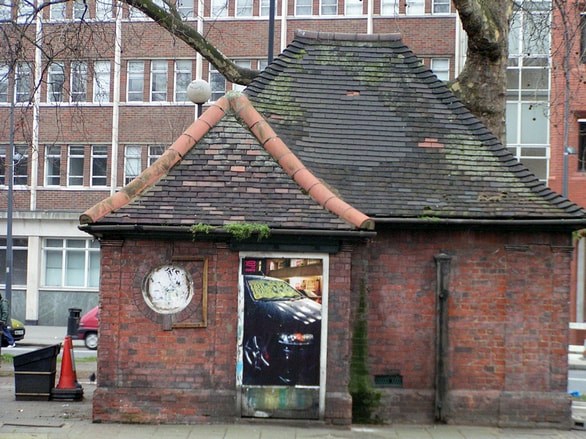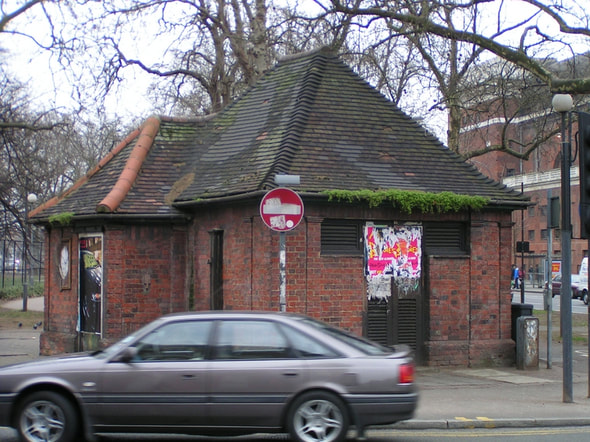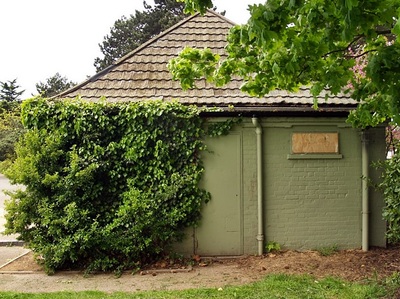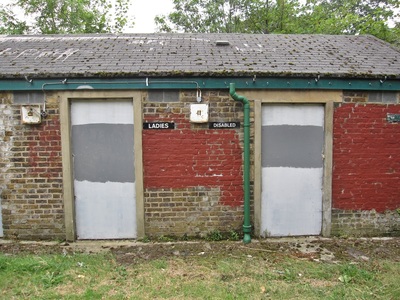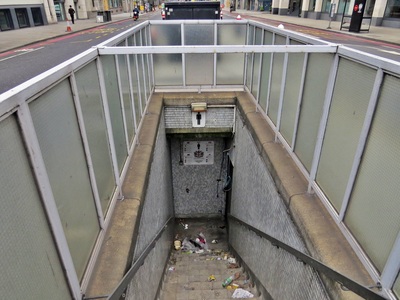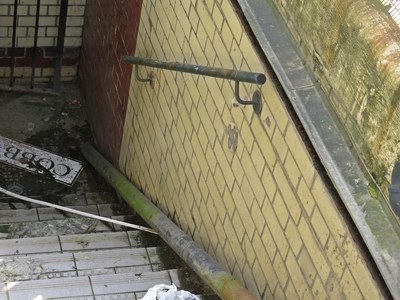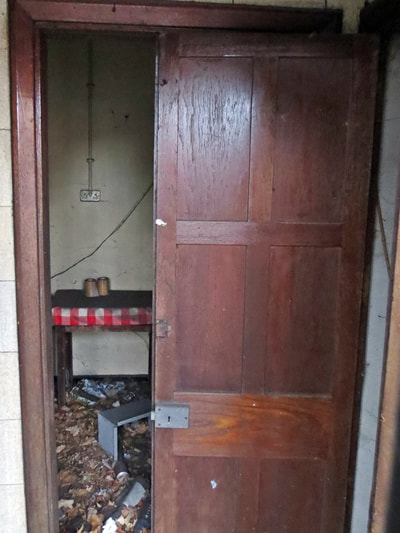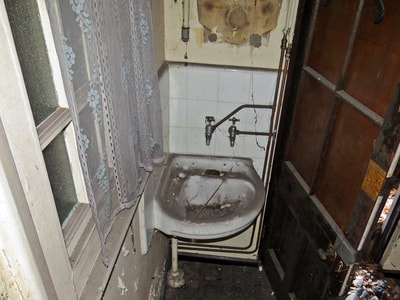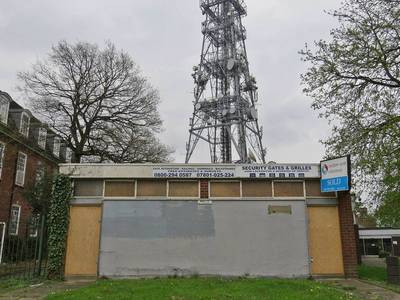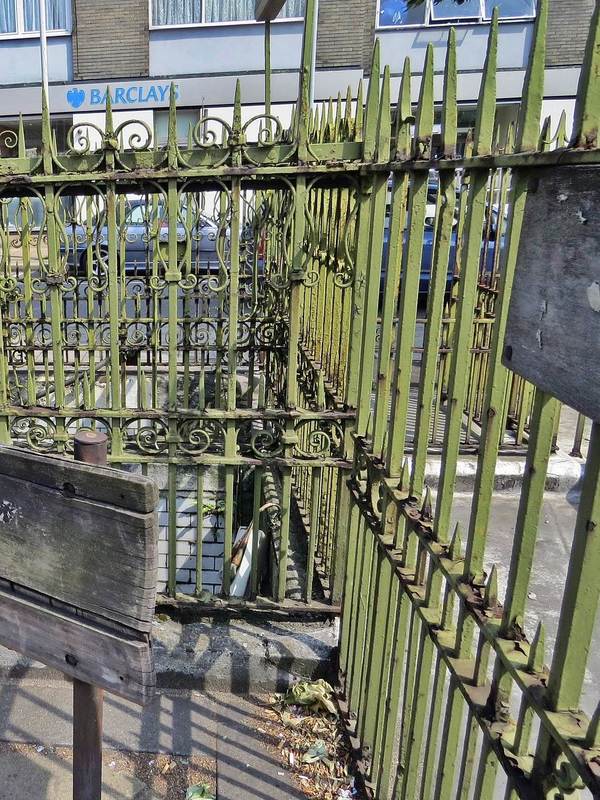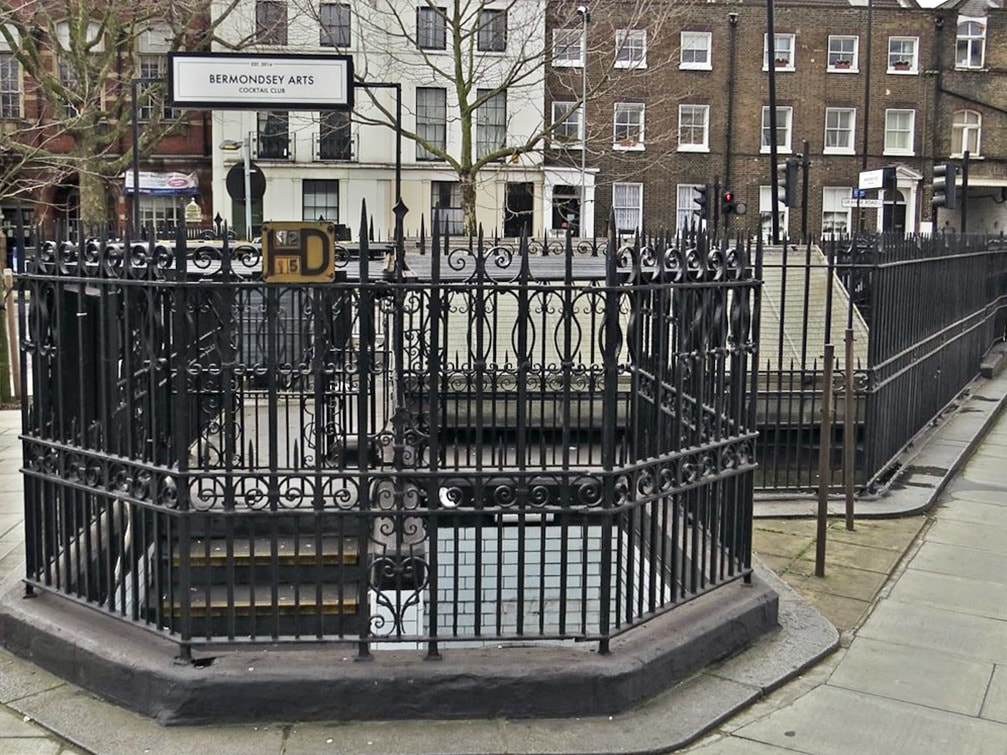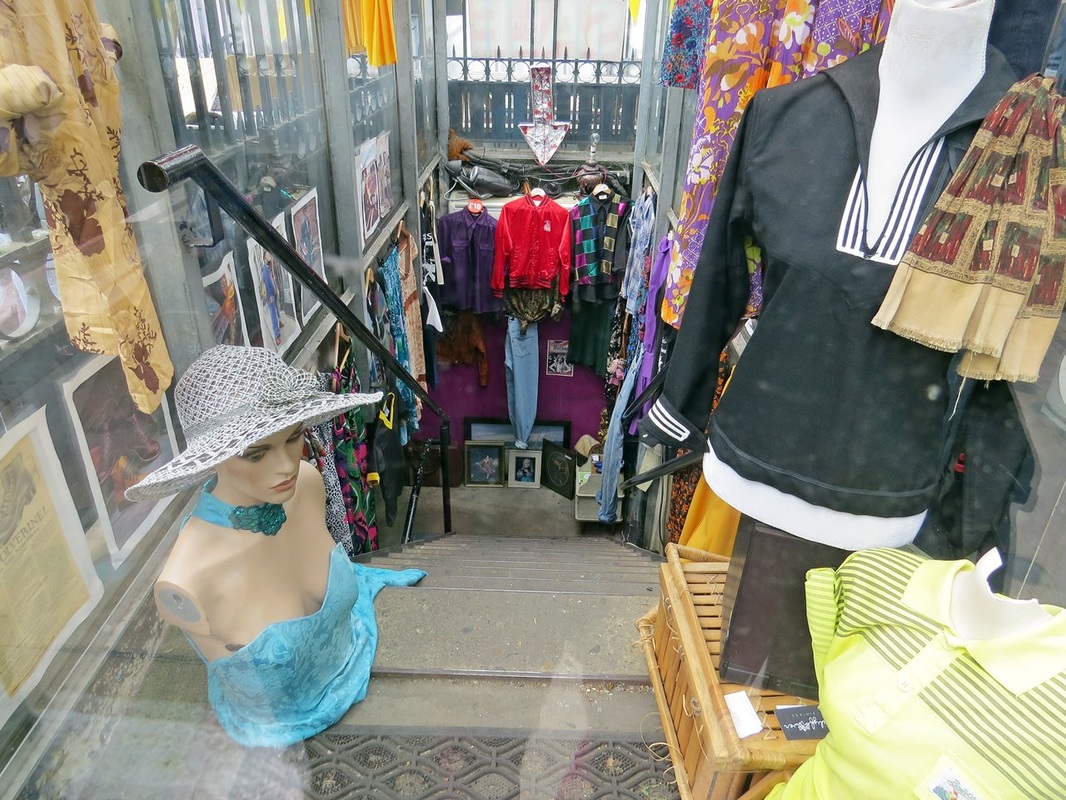|
How it all began: George Jennings (1810 –1882) was an English sanitary engineer and plumber invented the first public flush toilets. At The Great Exhibition at Hyde Park in 1851 Jennings installed his Monkey Closets in the Retiring Rooms of The Crystal Palace. These were the first public toilets, and they caused great excitement. During the exhibition, 827,280 visitors paid one penny to use them; for the penny they got a clean seat, a towel, a comb and a shoe shine. "To spend a penny" became a euphemism for going to the toilet. Jennings excelled in public sanitation projects such as the design of the underground 'public convenience'. The entrances to these were elaborate metal railings and arches lit by lamps, with interiors built of slate and later, of ceramic tiles. |
Spending a penny....The Continued Decline of the Public Toilet

After 18 years of running this Derelict London website I am still stumbling across lots of closed down toilets. A BBC report in 2016 said at least 1782 facilities have closed across the UK in the last decade (disclosed after a Freedom of Information request).
Gradually a few are being regenerated but not as public toilets.
Converting abandoned public toilets in London into flats and businesses is providing a solution to rising property prices for some.
Here is a link to a BBC TV news item that Derelict London was involved in:
http://www.bbc.co.uk/news/uk-england-london-21195520
Gradually a few are being regenerated but not as public toilets.
Converting abandoned public toilets in London into flats and businesses is providing a solution to rising property prices for some.
Here is a link to a BBC TV news item that Derelict London was involved in:
http://www.bbc.co.uk/news/uk-england-london-21195520
'Access to a toilet is a human right – closing public loos is one austerity cut too many'
Janet Street-Porter (The Independent 2016)
Janet Street-Porter (The Independent 2016)
Archway, N19 - Disused Public Toilets
These defunct toilets are situated in front of the Archway Tavern on a site that has housed pubs since the 1700s, with the current pub building being built in 1888. It's interior features on the cover of the Kinks' album "Muswell Hillbillies" (despite being a couple of miles away from Muswell Hill)
The pub has recently reopened after being closed for a few years (including a brief stint as the ill-fated relocation of the West End's Intrepid Fox goth and metal boozer). It now sits on a recently pedestrianised square and offers some tasty beers including a Muswell Hillbilly IPA. The toilets have a tablet laid by the Metropolitan Borough of Islington dated 1939. The tablet is barely legible but another date on there of 1896 is when it was likely built and presumably remodelled in 1939 as early photographs show that the original entrances were different.
As the area has received a substantial facelift over the years and is 'on the way up' it is just a matter of time before plans emerge for these former public loos.
The pub has recently reopened after being closed for a few years (including a brief stint as the ill-fated relocation of the West End's Intrepid Fox goth and metal boozer). It now sits on a recently pedestrianised square and offers some tasty beers including a Muswell Hillbilly IPA. The toilets have a tablet laid by the Metropolitan Borough of Islington dated 1939. The tablet is barely legible but another date on there of 1896 is when it was likely built and presumably remodelled in 1939 as early photographs show that the original entrances were different.
As the area has received a substantial facelift over the years and is 'on the way up' it is just a matter of time before plans emerge for these former public loos.
Bow, E3 - Derelict Public Conveniences
These long closed down Victorian (opened 1899) public toilets by St Mary's Church in Bow were in far cleaner condition than I expected when I popped down via a small gap in the fence recently. This was due to a project which cleaned out the litter and opened the toilets as an arts installation called "Listed Loo" for just one weekend in 2012. So only a few years instead of 23+ years of litter though there was still a thick layer of recent rat droppings as a potential slip hazard down the steps.
The arts installation involved red paint which is why some tiles are daubed in it. This red paint is symbolic of the statue which sits above the toilets. The statue is of the then Liberal Prime Minister William Gladstone erected in 1882 by Theodore Bryant of the nearby Bryant & May match factory. The statue was erected using the surplus money Bryant & May gained once matches were no longer taxed (the taxes were abolished in theory to increase the worker’s wages). The female workers were forced to take a half day’s unpaid leave to celebrate the statue’s unveiling and are said to have cut their arms in protestation. The outstretched hand of the statue has been daubed with red paint on several occasions as a tribute to the women.
The arts installation involved red paint which is why some tiles are daubed in it. This red paint is symbolic of the statue which sits above the toilets. The statue is of the then Liberal Prime Minister William Gladstone erected in 1882 by Theodore Bryant of the nearby Bryant & May match factory. The statue was erected using the surplus money Bryant & May gained once matches were no longer taxed (the taxes were abolished in theory to increase the worker’s wages). The female workers were forced to take a half day’s unpaid leave to celebrate the statue’s unveiling and are said to have cut their arms in protestation. The outstretched hand of the statue has been daubed with red paint on several occasions as a tribute to the women.
'Elderly people, disabled people, people with carers, women and children all have their lives limited by the UK’s lack of public toilets. We need to talk about this unseen sanitation crisis'
New Statesman
New Statesman
Kennington SE11 - Disused Public Toilets
These (now Grade II listed) gentleman's public toilets at Kennington Cross were built in 1898 as a result of the 1891 Public Health/London Act by the local authority with fittings by Finch and Co. of Lambeth. Wikipedia states that 'Charlie Chaplin is thought to have used the lavatory during his childhood, and writes about sitting nearby when locked out of his home'.
Original features include white marble urinals with black marble modesty screens and ceramic roundels inscribed "B Finch and Co Limited, Sanitary Engineers, Lambeth SE", three cubicles and a cast iron water tank with glass panels, a mosaic floor from the 1960s and an attendant's booth. Nice 'stink pipe' too. Despite the toilets closing in 1988 this one looks in good condition as it was renovated by a community project called ArtsLav who used it as an arts centre from 2013 until 2017. The council then leased it to Bermondsey Arts Club Limited who intend to convert it into a cocktail bar like what they have done with the former toilets on Tower Bridge Rd. Meanwhile, the site remains vacant. The cubicle doors show some interesting 1980s graffiti.
Allen Maskell writes to Derelict London : “Excellent site, decay and the march of progress driven by local admin, mindless destruction of local history and individual style rubbed out forever. Keep it up, please, perhaps one day these people will change. Your section on Underground public toilets is of great interest to me as I do remember years ago an offer from Lambeth of a £1 per year lease deal. Perhaps I was dreaming. My idea then was to lease those disused gents to open a music studio, the offer from the Mayor and his merry men disappeared quickly.”
Original features include white marble urinals with black marble modesty screens and ceramic roundels inscribed "B Finch and Co Limited, Sanitary Engineers, Lambeth SE", three cubicles and a cast iron water tank with glass panels, a mosaic floor from the 1960s and an attendant's booth. Nice 'stink pipe' too. Despite the toilets closing in 1988 this one looks in good condition as it was renovated by a community project called ArtsLav who used it as an arts centre from 2013 until 2017. The council then leased it to Bermondsey Arts Club Limited who intend to convert it into a cocktail bar like what they have done with the former toilets on Tower Bridge Rd. Meanwhile, the site remains vacant. The cubicle doors show some interesting 1980s graffiti.
Allen Maskell writes to Derelict London : “Excellent site, decay and the march of progress driven by local admin, mindless destruction of local history and individual style rubbed out forever. Keep it up, please, perhaps one day these people will change. Your section on Underground public toilets is of great interest to me as I do remember years ago an offer from Lambeth of a £1 per year lease deal. Perhaps I was dreaming. My idea then was to lease those disused gents to open a music studio, the offer from the Mayor and his merry men disappeared quickly.”
MILLWALL
This "amazing find" of a derelict public toilet was in a park in the Isle of Dogs overlooked by the concrete & glass structures of Canary Wharf. I was disappointed not to see any rats..... To clear up any confusion here, this Millwall is actually north of the Thames and not SE London. Many people presume that Millwall is in SE London because the football team recently played in New Cross & now in Bermondsey. Millwall Rovers was founded by workers at Morton's Jam Factory on the Isle of Dogs in 1885. Millwall played on a variety of grounds on the Isle of Dogs. They moved South of the River to The Den at New Cross, SE14 in 1910. These pictures were taken a few years ago and the building has since been demolished.
'Save Public Lavatories! They’re part of our Heritage and should be preserved like red telephone boxes, hedgehogs and Mick Jagger!'
Bus Pass Elvis Party aka Church of the Militant Elvis
Notting Hill Gate W11
Craig writes to Derelict London: "a popular toilet was Notting Hill Gate. In the rush hours, it was standing room only! It was very popular with married men and other 'straights' looking for a fumble on the way home. Today, there are very few public toilets left which is a shame. Not only did they prevent the incidences of people using shop doorways as toilets, they did provide an opportunity for gay men to find others like themselves long before gay bars. Public toilets are not a very photogenic subject, unless you are Verity Lambert, who wrote an excellent book on the subject praising the architecture of such places, but they did fulfil a useful role for lonely men and the police who were happy to spend hours, if not days, spying on the activities through holes drilled into the lock-up doors or from empty council flats opposite. Lambeth Council was delighted to allow this. The Victorian underground toilet at Kennington Oval was often raided on the pretext that some member of the public had complained. I think it had more to do with gay men being seen as soft targets. Today, attitudes have changed. However, many public toilets have seen the end of careers for both famous people and others who were caught in flagrante delicto."
Clerkenwell Green, E2
The proposed development of these disused public underground toilets on this historic green have been the subject of much outrage among residents and local traders. The Council have scrapped plans due to public pressure despite planning interest from 19 companies.
The Green has been visited by generations of political dissenters from the Wat Tyler to Lenin. In 1842, the Prime Minister Robert Peel banned public meetings from taking place here. In 1890, the world's 1st ever May Day march left from here. The Green was described by poet Sir John Betjeman as "a remarkable haven of peace amid the roar of public transport and heavy lorries".
Here is a selection of toilets across the capital (click to enlarge):
Shepherds Bush W12
In 1962 actor Wilfrid Brambell (Albert Steptoe) was nicked for soliciting here and received a 25 guinea fine. These toilets have now been demolished.
Craig writes: "Many years ago I went into the toilets in the early 1980s not long before they were closed for good.It was so dark because the windows were tiny and had overgrown with vegetation. You couldn't see your hand in front of your face, it was that gloomy. Gingerly walking forward hoping to find a urinal to pee, my eyes began to adjust, and I realised that there must have been at least 10 men in there in various groups and positions! Nobody stopped, they just carried on."
BARNES
Chris writes: "Brought back memories seeing this -I once rode over it very worriedly as an eleven-year-old or so, having just slammed my pubescent wedding tackle into the handlebar stem on my bicycle while riding on Barnes Common. I was pretty certain I was going to find various bits of my anatomy cut off before their prime! Happy to say everything was intact! – Well at least as intact as before :=))"
Here is another gallery with selection of toilets from across the capital (click to enlarge)
Back from the Brink - From Derelict Public Toilets to Conversion:
These public toilets occupy prime sites in London and councils have realised that they are sitting on a valuable asset so to speak. Many former toilets around London have now been sold off or leased to private businesses and converted into and bars, galleries, beauty salons and even residential use. Some call it a fine example of urban regeneration. But others fear Britain's public toilets are an endangered species. Below is a small selection, but no means comprehensive guide to converted toilets in London.
Bermondsey Arts Cocktail Club - Tower Bridge Road, SE1
Much to the amusement of the regulars of old school boozer at The George just up the road this disused public convenience that opened in 1902 has been converted into a hip cocktail bar complete with some original tiling. From the early 1900s there were 23 underground public toilets in what is now the London Borough of Southwark. This one on the junction of Grange Rd and Tower Bridge Road was the last one to close down (in around 2004). All the others in the Borough appear to have been filled in and sealed over. Meanwhile, over in Lambeth the derelict public toilets by Clapham Common station have been converted into the WC Bar, a Wine & Charcuterie serving cocktails and meat and cheese boards.
Restaurant Story - Tooley Street, SE1
This closed down public toilet was actually demolished after these photographs were taken in 2011. Restaurant Story, a Michelin star winning establishment now occupies a newly built pavilion on the site at the intersection of Tooley Street and Queen Elizabeth Street.
Meanwhile another lease of life to disused public toilets in Spitalfields, E1
These toilets in front of Christ Church in Commercial Street, Spitalfields were originally converted into the Public Life nightclub but had its licence revoked by the council after a police raid by 50 officers in 2011 closed the club after conducting a search of the premises that resulted in 13 arrests. They also found that the club was holding more people than legally permitted. The building was originally a public toilet and is only licensed to hold 60 people, including staff. Must have been a bit tight in there during the raid!
Now Public Life is a second hand clothes shop. As with many second hand shops in this part of the town it's billed as "Vintage"
Public Toilets converted into residential use - Crystal Palace SE19
These toilets in Crystal Palace photographed in the first edition have now been converted into residential accommodation after an architect bought the lease from the Council and spent £65,000 on renovating them.
Under renovation (but not as toilets) in Clapton Common:
Paul Talling's Derelict London - all photographs are copyright © 2003-2024
Click the envelope icon to join the mailing list for occasional news on website updates, new book releases and Paul's guided walking tours. Follow Derelict London on Facebook and Twitter
Please do not contact me with property/ filming/photo shoot location queries
Click the envelope icon to join the mailing list for occasional news on website updates, new book releases and Paul's guided walking tours. Follow Derelict London on Facebook and Twitter
Please do not contact me with property/ filming/photo shoot location queries






